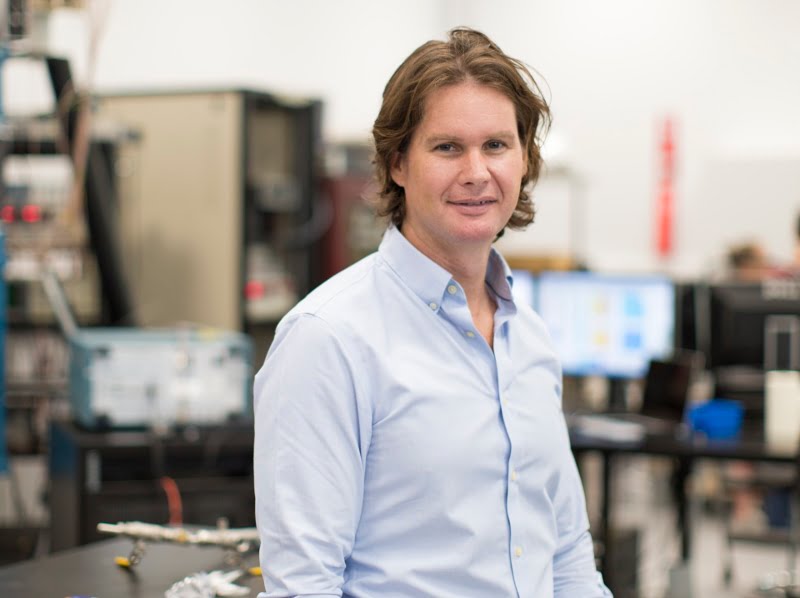Nanotechnology will force a change in commerce and society at least as significant as the digital revolution, and companies that want to get in on the ground level need to start now.
That’s the stark warning from one of Australia’s leading researchers in the field, Professor David Reilly, an experimental physicist at the University of Sydney and leader of one of the flagship programmes at the Australian Institute for Nanoscale Science and Technology (AINST), which officially opens its doors this week.
“Twenty years from now in the high tech space it will not be possible to be a leader without some understanding of quantum mechanics. It just won’t be possible to be strategic,” according to Prof Reilly.

“Remember the internet in the early to mid-1990s taking off and transforming life? The work I am doing in quantum physics will do the same.”
While he acknowledged that it could take a decade or longer to really take off, the changes wrought by nano science will be profound.
But Prof Reilly acknowledges that one of the problems for business leaders is that the science “defies simple explanation.”
Quantum physics which explores nano scale activity can trace its history back almost 100 years. Nano scale measures things about ten atoms in length – for those who studied physics at school on early in their university career, it’s where the weirdness kicks in.
According to Prof Reilly; “We swept the bizarre under the carpet for 100 years. Now we have pulled the carpet back and are ready to deal with the strange aspects of quantum physics and how to use that for new technologies.”
The challenge for the current crop of business leaders he acknowledged is to be able to cut through the hype surrounding the area while gaining some measure of understanding about the field. “Start to get your head around what we are talking about. The challenge is that people need to learn physics and that sounds ridiculous.”
It won’t be easy; “I’ve been in the field for 20 years and I still grapple with it.” But it will be essential.
Research and Markets has forecast that the global nanotechnology industry will grow to reach US$75.8 billion by 2020.
In terms of the practical applications Prof Reilly said that there would be new classes of sensors and instruments. That it might be possible to design tools for defence or mining that could image gravity in order to identify underground deposits or bunkers.
Meanwhile an entire new class of powerful computing devices was likely that would allow, for example, chemical and pharmaceutical simulation that had not previously been possible. “Beyond that it all gets a bit science fiction.”
“The world’s largest technology companies whose business will be disrupted are deeply engaged in this already. And we are starting to see companies at the next level down.”
And practical results are emerging. The University of Queensland’s Australian Institute for Bioengineering and Nanotechnology recently released details of trials of a nanopatch that can vaccinate against polio using a fortieth of the amount of the vaccine to get the same result as a needle injected dose. Innovative batteries are being designed that will lower reliance on fossil fuels, quantum computing effects are creating new computer security solutions.
Thomas Maschmeyer, professor of chemistry and director of the AINST said enterprises now have the opportunity to “become involved at ground level.”
A University of Sydney spin off, Gelion Pty Ltd, which hinges around Professor Maschmeyer’s nanostructured gels last week announced it had secured $11 million of funds from the London based Armstrong Energy, to continue its work to create a new class of battery technology that will exploit nanostructures and compete with the current lithium ion technology.
Already backed by investors and partners in the US, Germany and Israel, the company is focused on building batteries that can be integrated with a house. A full commercial demonstration prototype could be developed within four years.
Prof Maschmeyer believes that nano technology will revolutionise computing. “We are building the equivalent of the first transistor. There is a long way to go before we can multiplex them and do calculations. But if we can, and the signals are that we can, this will be a game changer.”
Not least because nano technology means that massive scale computing would be possible at a fraction of the current cost, and require significantly less energy.
The AINST will this week be officially launched from the University of Sydney’s $150 million Nanoscience hub, which was initiated with a $40 million seed grant from the Australian Government. Purpose-built for nanoscience, the launch is being marked by a two-day nanoscience conference which has attracted a raft of international speakers.
Let the weirdness commence.
*Photo Credit: The University of Sydney
Do you know more? Contact James Riley via Email.

